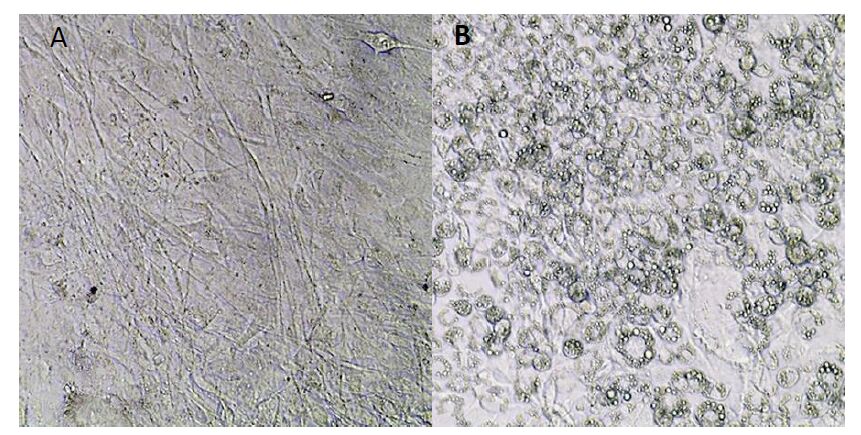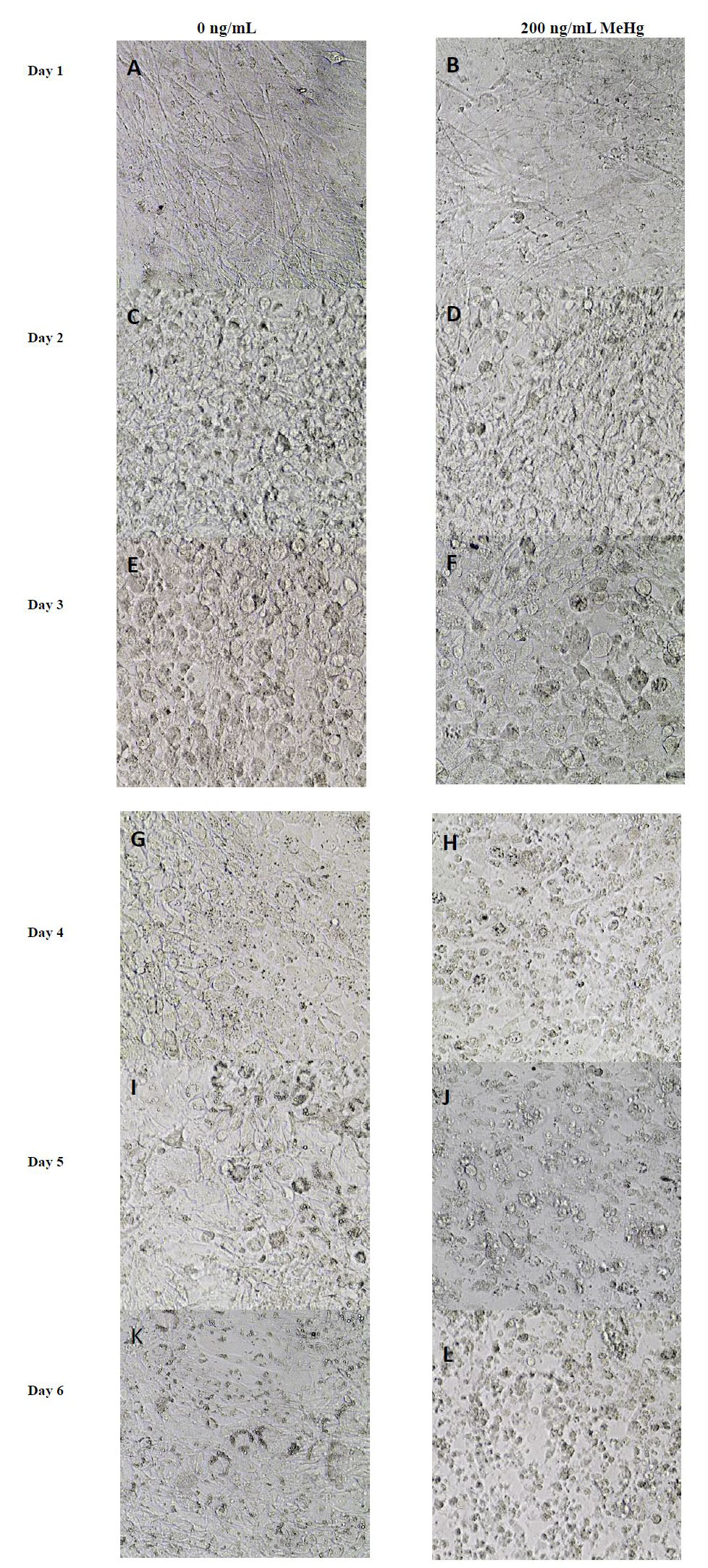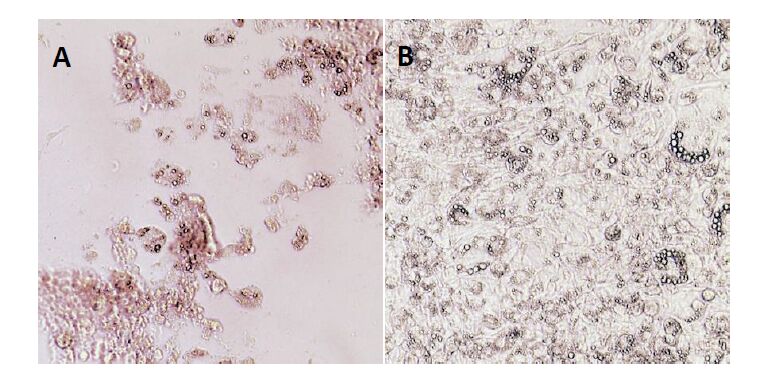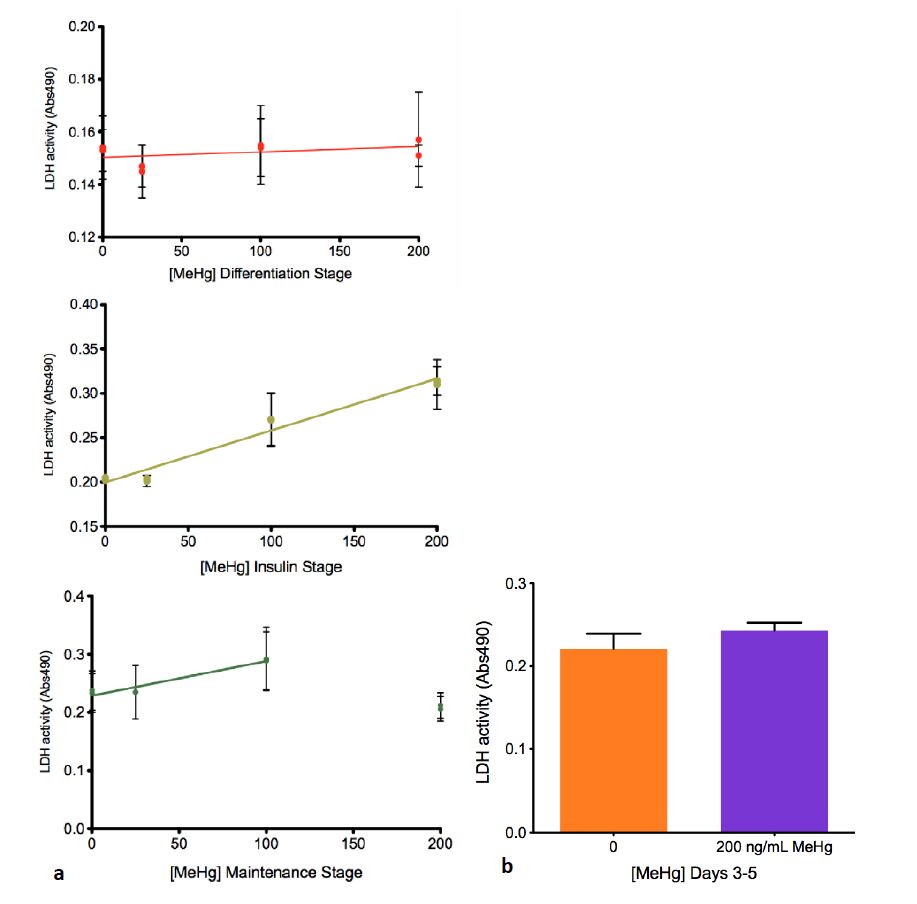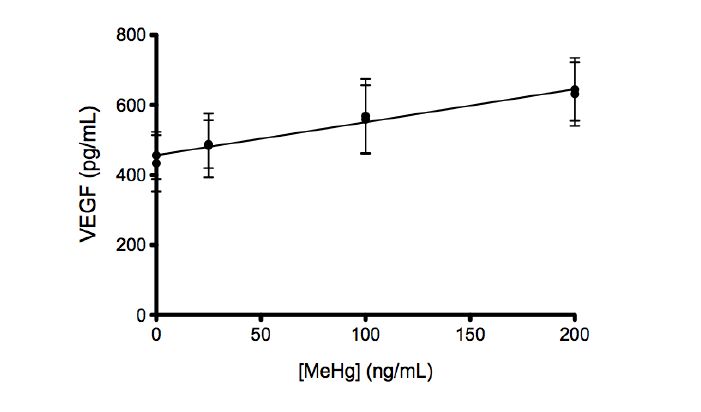1. Introduction
Mercury is an element that exists naturally within the Earth's crust and is constantly cycled into and out of different locations in the environment, due to both natural processes and human activities [1,2]. Industrial processes, including the burning of coal and production of metals, are the maincontributors to anthropogenic mercury release into the atmosphere, with an estimated 65% of air emissions originating in Asian countries, primarily China [1]. Due to atmospheric circulation trends, large amounts of mercury are deposited into terrestrial and aquatic environments at Arctic latitudes, a process which may be exacerbated by the increasing effects of global climate change [2,3,4].
Several species of mercury exist within the environment, and may interconvert through reactions catalyzed either chemically (in the environment) or biologically (within organisms). Atmospheric mercury released through industrial processes generally exists in its elemental form, Hg0 [1,2,3,4], while ionized inorganic mercury (Hg2+) and so-called "organic" mercury (e.g., methylmercury, HgCH3+) are the forms most often encountered in the human environment. The latter is typically formed through methylation of inorganic mercury by microorganisms living in aquatic and wetland environments [2]. Eventually both forms enter the human food system.
Methylmercury (MeHg) is unique among the mercury species in its ability to bioaccumulate and biomagnify within aquatic food webs. Predatory fish, which tend to occupy higher trophic levels within these systems, often contain MeHg at concentrations higher than those found in the surrounding environment. Consumption of predatory fish as food thus represents the most common source of MeHg exposure both to humans and to wildlife [5]. Given the increased concentrations of mercury in the environment at northern latitudes, exposure to MeHg is therefore of great concern to native communities, including Alaska Natives, who rely on predatory fish as a staple food in their subsistence-based diets [5,6,7].
1.1. Health effects
Much of the current knowledge of MeHg's detrimental health effects has arisen from observation of accidental catastrophic release of MeHg into the environment, such as in Minamata, Japan in the 1960s [7,8]. Observation of patients following such incidents has shown that acute exposure to high concentrations of MeHg can cause severe negative impacts on the brain and nervous system, causing damage both in exposed adults and in fetuses exposed in utero. MeHg, unlike inorganic ionic mercury species, is capable of easily crossing the human placenta, which in part has led to increased concern about MeHg exposure to the developing embryo and fetus [7]. Effects of more chronic low-level MeHg exposure are less well understood, but neurodevelopmental and neurological damage in general appear to be associated with such exposure [9]. The MeHg molecule itself has a high affinity for thiol groups, and is able to covalently associate with accessible thiol groups on proteins, particularly those found in cysteine residues. Such modification is known as "S-mercuration", and is thought to provide the basis for the cytotoxic and neurotoxic effects of MeHg in vivo, though the precise biochemical mechanisms by which this occurs are still not entirely clear [8].
1.2. Mercury and diabetes
While considerable focus has been directed toward effects of MeHg exposure in the brain and in cultured neurons, less research exists examining possible effects on other organs or cell types. Epidemiological studies have examined possible effects of MeHg on diabetes and metabolic dysfunction, and while some results have indicated a correlation between MeHg and eventual development of diabetes [13], others have shown no significant correlation between exposure to MeHg and diabetes in patients living in a MeHg-contaminated area [14]. A study in 2013 [15] examined interactions between diabetes and MeHg toxicity, concluding that diabetic animals experienced more pronounced toxic effects from MeHg than metabolically normal animals, providing evidence of a role for MeHg in metabolic dysfunction.
Studies by Barnes, Hanlon and Kircher [16] and Barnes and Kircher [17] provide the only results to date on the effects of exposure of adipocytes to mercury compounds, though the mercury species used in these studies was inorganic mercury (Hg2+), which is less relevant to human health than MeHg, for reasons mentioned above. Regardless, their studies showed a significant effect on the ability of pre-adipocytes in culture to differentiate into mature adipocytes, as well as some effect on insulin signaling in these cells, which again provides a basis for further exploration of mercury species as potential modulators of metabolic processes in adipocytes.
Vascular endothelial growth factor (VEGF) is a signaling protein central to the process of angiogenesis, the formation of new blood vasculature in tissue. Given that the proper function of adipose tissue may also be sensitive to changes in vascularization, VEGF recently has become a molecule of interest in conditions affecting cell signaling processes in adipose tissue and adipocytes, including diabetes and obesity [18,19,20,21]. So far, however, the consequences and possible origins of increased VEGF expression in adipose tissue, as well as possible connections to metabolic dysfunction, remain unknown.
Since no literature currently exists examining the effects of low-level MeHg exposure on adipocytes, hypotheses developed for this study were largelyexploratory in nature. In this study the following hypotheses were addressed:
• Exposure to MeHg increases secretion of VEGF by pre-adipocytes (3T3-L1 cell line) in culture in a concentration-dependent manner
• Exposure to MeHg causes increased cytotoxicity in adipocytes in culture (3T3-L1 cell line) in a concentration-dependent manner, leading to reduced VEGF in media.
Our results suggest that MeHg is toxic to 3T3-L1 cells during the later stages of differentiation and MeHg elevates VEGF secretion after the 3T3-cells have differentiated into mature fat storage cells.
2. Materials and Methods
3T3-L1 cells are a line of adherent pre-adipose mouse fibroblasts that is widely used as a model for studying adipocytes; adipogenesis as observed in these cells is accepted in the research community as a faithful representation of human adipogenesis [22,23]. As pre-adipocytes, the cells in this line are genetically "committed" to transformation into adipocytes, but have not yet received the chemical signals necessary to differentiate them into mature cells.
2.1. Culture of 3T3-L1 pre-adipocytes
3T3-L1 adipocytes (ATCC) were cultured from frozen/thawed cells according to the protocol provided [24] in 12-well flat-bottom cell culture plates (BD Falcon) containing 2 mL of liquid medium per well. Cells were incubated in a humidified incubator with 5% carbon dioxide (CO2) at 37 °C.
Four distinct cell populations, grouped according to differentiation status and MeHg exposure time, were used in these experiments. A visualdepiction of the names and characteristics of these populations is presented in Figure 1. Within each cell population, four different MeHg concentrations (0-200 ng/mL; described below) were used in order to determine whether observed effects on each population were dependent on MeHg exposure concentration.
For those populations undergoing differentiation (populations "1" and "3" in Figure 1), cultures were grown to confluence using Growth Medium (DMEM; 10% calf serum; 1% pencillin/streptomycin), followed by incubation with Growth Medium for two further days past confluence to initiate contact inhibition. At this point, cells wereswitched to Differentiation Medium (Growth Medium + IBMX, dexamethasone, and insulin). Incubation with Differentiation Medium continued for two days, with medium changed every 24 hours. Cells were then switched to Insulin Medium (Growth Medium + insulin) for two days, with medium again changed every 24 hours.
Finally, cells were incubated with Maintenance Medium (DMEM; 10% fetal bovine serum; 1% penicillin/streptomycin) for 10 days to maturity. Cell populations not undergoing differentiation (populations "2" and "4" in Figure 1) were grown to confluence similarly to the differentiating populations, but were given Growth Medium for Days 2 and 3 rather than Differentiation Medium. These populations were then given Insulin Medium and Maintenance Medium alongside the differentiating cells in the following days. The overall differentiation protocol is summarized in simplified form in Table 1.
Exposure to MeHg occurred either throughout the entire differentiation period, beginning at confluence (Populations "1" and "2" in Figure 1) or only during the final three days of the differentiation/maturation process (Populations "3" and "4" in Figure 1).
Table 1. 3T3-L1 cell differentiation protocol.
| Day Name |
Procedure/Medium Used
|
|
Grow cells to confluence in Growth Medium; replace medium every 2-3 days
|
|
Cells are confluent
|
|
Add Growth Medium; incubate 24 hours
|
| Day 1 |
Change Growth Medium; incubate 24 hours
|
| Day 2 |
Add Differentiation Medium; incubate 24 hours
|
| Day 3 |
Change Differentiation Medium, incubate 24 hours
|
| Day 4 |
Add Insulin Medium; incubate 24 hours
|
| Day 5 |
Change Insulin Medium, incubate 24 hours
|
| Day 6-20 |
Add Maintenance Medium; incubate and change every 24 hours for 8-15 days until cells are mature
|
Cells were viewed under an AMD EVOS Core digital inverted light microscope, and images were captured using the microscope software beginning after the first 24-hour incubation in Growth Medium (Day 1). Cells were imaged immediately prior to changing cell media; because of this, "Day 1" images represent the appearance of the cells after 24 hours of incubation with Growth Medium, "Day 2" images show cells after 24 hours in Differentiation Medium, and so on.
Upon each cell medium replacement, 1 mL of old media was collected from each well, saved in a 1.5 mL Eppendorf tube, labeled according to the scheme above ("Day 1" for media collected after 24 hours in Growth Medium, etc.) and stored at −20 °C until analysis.
Methylmercury (MeHg) stock solution was obtained at 1000 ppm in H2O (Alfa Aesar), and 1.4 mL were added to a 1.4 mL aliquot of medium to create a MeHg/medium solution of 1 ppm (1000 ng/mL). Appropriate amounts of this solution were added to each culture plate well to obtain the desired concentration in 2 mL of medium. Fresh MeHg/medium solution was made each day immediately prior to addition to cells, and solutions were discarded as hazardous waste after use.
Concentrations of MeHg in the media used were designed to approximate total mercury at levels that would be considered slightly elevated (25 ng/mL), elevated (100 ng/mL), and very elevated (200 ng/mL) in human blood [25]. Individual cell cultures were either treated from Day 1 (during differentiation) or for several days after reaching maturity (post-differentiation).
Appropriate personal protective equipment was used at all times when working with MeHg solutions. Precautions included the use of Silver Shield gloves, along with an additional outer nitrile glove, whenever concentrated MeHg stocks were opened, as well as lab coats and a chemical safety hood. All mercury-containing liquid or solid wastes, including cell media, Eppendorf tubes, and pipet tips, were disposed of as hazardous waste according to local regulations.
2.2. Assays: lactate dehydrogenase assay
The LDH assay makes use of the enzyme lactate dehydrogenase (LDH), which under normal conditions is present within the cytoplasm of many different cell types, and is not normally secreted or released outside the plasma membrane of the cell. The LDH assay is a common means of assaying cytotoxicity, and so is generally performed using a commercially available kit. The LDH kit used in these experiments was the Pierce LDH Cytotoxicity Assay, which provides its own protocol, described briefly below.
Media samples were thawed at room temperature (RT) and centrifuged at 2000 rpm for 5 minutes to precipitate any cell debris. 50 mL of cell medium supernatant were added to wells of a96-well clear flat-bottom plate (BD Falcon) in duplicate. LDH positive control from the kit was added to 1 well, and cell-free differentiation media to another well as a blank. Each well then received 50 mL of LDH reaction mix containing assay buffer and LDH substrate, a molecule that reacts with active LDH enzyme to form a red-colored product. Samples were incubated with reaction mix for 30 minutes at RT in the dark, and absorbance was read at 490 nm in a BioTek Synergy HT plate reader using Gen5 software.
2.3. VEGF ELISA
The enzyme-linked immunosorbent assay (ELISA) is a sensitive quantitative assay used to determine concentrations of particular proteins within a mixture or biological sample. The assay is based on the principle that antibodies bind with highspecificity to a particular antigen. ELISA is widely used both for research and for clinical diagnostics, and exists in several different forms, the most common of which is known as the sandwich ELISA.
Media samples were thawed at RT and centrifuged at 2000 rpm for 5 minutes to precipitate any cell debris. Cell medium supernatants from each MeHg condition were added to wells of the anti-VEGF coated microplate provided with the ELISA kit. A VEGF standard curve was created using VEGF standard supplied with the kit in a concentration range of 0-2000 pg/mL; media samples were diluted 1/2 prior to their addition to the plate in order to generate values that would fall within this standard curve. The plate was incubated for 2 hours at room temperature on a plate shaker, then rinsed five times using wash buffer. Antibody conjugate was then added to each well and the plate was incubated for 2 hours at room temperature on a plate shaker. Wells were again washed five times with wash buffer. Color reagent was added, and the plate was incubated for 30 minutes at room temperature in the dark without shaking. Stop solution was added to quench the color reaction, generating a yellow color; absorbance was read at 450 nm in a BioTek Synergy HT plate reader using Gen5 software.
2.4. Statistical analysis
For statistical analyses of effects on differentiating cells, cell populations were grouped according to stage of differentiation: Differentiation (Days 2 and 3, when differentiating cells were grown in Differentiation Medium), Insulin (Days 4 and 5, when differentiating cells were grown in Insulin Medium), Maintenance (Days 6-8) and Maturity (Days 10-12). Cell populations exposed to different concentrations of MeHg within each time group were compared with the unexposed population (0 ng/mL) to determine whether MeHg had any significant effect on LDH activity or VEGF secretion at any particular stage of differentiation. Cell populations that did not undergo differentiation, or that were exposed to MeHg only at the end of the differentiation process were analyzed as a single group for each population, rather than dividing into groups based on differentiation stage.
Data collected from the LDH assay and VEGF ELISA was analyzed and plotted using GraphPad Prism software. Analyses comparing two groups of data (e.g., exposure with MeHg vs. no exposure) used a Student's t-test, with resulting p values less than 0.05 considered significant. Analyses comparing multiple exposure conditions for a single exposure stage (e.g., exposure to 25 ng/mL, 100 ng/mL, and 200 ng/mL MeHg for the Differentiation stage) were performed using a one-way analysis of variance (ANOVA) with a Bonferroni post-test comparing all pairs of columns. Resulting p values were considered significant if less than or equal to 0.05, very significant if less than or equal to 0.01, highly significant if less than or equal to 0.001, and extremely significant if less than or equal to 0.0001.
3. Results
3.1. Morphological changes to 3T3-L1 cells upon differentiation and MeHg exposure
Observation of morphological changes in 3T3-L1 adipocytes in culture revealed that morphological changes are dependent on several different factors, including cell differentiation status, concentration of MeHg exposure, and time of MeHgexposure.
Differentiation of 3T3-L1 preadipocytes into mature adipocytes results in changes in cell morphology that are easily visible when viewing cells under a light microscope. Figure 2 shows untreated healthy confluent cells immediately prior to initiation of differentiation, i.e., immediately prior to addition of Differentiation Medium for the first time (Day 1) and mature cells after the differentiation process was complete (Day 14). Cells are notably more rounded and contain visible lipid vesicles indicative of successful differentiation (Figure 2B).
3.2. MeHg and cytotoxicity
Addition of MeHg to cell culture media over a period of several days resulted in additional significant visible changes to morphology of the cells, not attributable simply to processes of cell differentiation. Changes included a decrease in cell size and reduction in confluence (Figure 3J; 3L), indicative of cellular stress and/or toxicity.
Figure 3 shows a detailed comparison of cells during the first seven days of the differentiation process, both unexposed cells (0 ng/mL) and cells exposed at the highest MeHg concentration (200 ng/mL MeHg). Images shown were taken at 24-hour intervals immediately before changing cell media. These changes only occurred at MeHg concentrations at the higher end of the tested range (100, 200 ng/mL); the incubation time required before seeing changes was positively related to MeHg concentration.
At Day 8 of exposure to 200 ng/mL MeHg, the cells were found clumped together and detached from the culture dish (not shown) indicating that the toxicity of MeHg had led to complete cell death.
A similar pattern of morphology change and cell death was seen in the cells exposed to 100 ng/mL MeHg, though cell detachment did not occur until Day 10 of exposure. Figure 4 shows a comparison of unexposed cells and 100 ng/mL MeHg-exposed cells at Day 10, after initiation of differentiation. The unexposed cells clearly show developing lipid vesicles, while the 100 ng/mL MeHg cells are shown detaching from the surface of the culture plate. A few developing lipid vesicles are nonetheless visible in the exposed cells as well, indicating that cell morphology changes associated with the differentiation process may still be occurring to some extent in spite of cytotoxicity.
Cells exposed to 25 ng/mL MeHg throughout differentiation showed no noticeable difference in morphology to exposed cells at Day 14, with no visible decrease in cell size or detachment from the culture plate (Figure 2). Qualitative observation of the number of lipid vesicles present suggests fewer in the exposed cells, which may be due to natural variation in vesicle number and will need to be further evaluated quantitatively to determine if a true effect of 25 ng/mL MeHg on lipid storage is occurring. Nonetheless, the lack of overall morphological changes to the cells suggests that cytotoxicity of 25 ng/mL MeHg is less than that of 100 ng/mL or 200 ng/mL MeHg at 14 days of exposure.
3.3. MeHg and differentiation signal system
An additional subset of cells were either exposed to no MeHg or to the highest concentration of 200 ng/mL, and were not differentiated: media used for these cells were Growth Medium for Days 1-6, and Maintenance Medium for all subsequent days. Thus these cells were not exposed to IBMX/dexamethasone and did not experience the significant change in morphology associated with differentiation. Cells unexposed to MeHg did not experience any noticeable change in morphology over the course of the 14-day exposure; they maintained the morphology associated with undifferentiated pre-adipocytes. Cells exposed to 200 ng/mL MeHg experienced morphological changes similar to those seen in the differentiating adipocytes exposed the same MeHg conditions, although complete detachment from the culture plate took approximately 1 day longer to occur.
Additional cell populations were differentiated and allowed to reach near-maturity without any exposure to MeHg, at which point they were then exposed to 0, 25, 100 or 200 ng/mL MeHg in order to determine effects of MeHg exposure on already-differentiated adipocytes. No significant differences in morphology are seen after exposure.
3.4. Factors affecting cytotoxicity
Quantification of cytotoxicity using the LDH assay revealed that toxicity of MeHg exposure on adipocytes is dependent on several different factors, including concentration of exposure, time of exposure, and cell differentiation status. Results for each condition are detailed below.
Differentiating pre-adipocytes (Population "1" in Figure 1) were exposed to different MeHg concentrations beginning at confluence, and cytotoxicity was determined using the LDH assay performed on media collected every 24 hours of exposure during each stage of differentiation. Samples from the Differentiation stage were collected on Days 2 and 3, the Insulin stage on Days 4 and 5, and the Maintenance Stage at Days 6 and 8. Cytotoxicity was quantified using absorbance of each sample at 490 nm following the LDH assay, a measurement which represents LDH activity and presence in the cell media.
The results showed a significant increase in LDH in the media, indicating increased cytotoxicity, in the 100 and 200 ng/mL MeHg cell population during the Insulin stage on (Days 4 and 5) which then decreases in the 200 ng/mL population during the Maintenance stage (Figure 5a). LDH concentration in the 100 ng/mL MeHg population remains elevated, indicating that an exposure concentration of 100 ng/mL requires a longer exposure time in order to cause maximum cytotoxic effects. Notably, no significant cytotoxicity was seen in the cells exposed to 25 ng/mL MeHg during any differentiation stage, which agrees with the observations of cell morphology that showed no differences in cell death between unexposed cells and 25ng/mL-exposed cells at the conclusion of differentiation.
Two separate populations of cells, either unexposed to MeHg or exposed to 200 ng/mL MeHg, were not exposed to Differentiation Medium and thus retained their pre-adipocyte phenotype (Figure 1, Population "2"). Media were collected from these cells every 24 hours over 14 days; the LDH assay was performed on media from Day 3 to Day 5 (n = 4) to determine total cytotoxicity (Figure 5b).
Results show no significant difference (p = 0.526) in cytotoxicity between unexposed and MeHg-exposed cells between Days 3 and 5 of exposure, a time period in which significant differences in cytotoxicity were seen between unexposed and MeHg-exposed cells undergoing differentiation. This indicates that cytotoxicity of MeHg is different in 3T3-L1 cells depending on the cells' differentiation status.
Adipocytes that had been allowed to differentiate to maturity while unexposed to MeHg during differentiation were either unexposed or exposed to 25, 100, or 200 ng/mL MeHg for three days starting at Day 12 after initiation of differentiation. Media were collected every 24 hours, and results for the LDH assay for all samples within the three-day time period were analyzed. No significant cytotoxicity was seen in cells exposed to any of the MeHg concentrations within the three-day exposure period as compared to control during Maintenance Period.
3.5. Effects of MeHg exposure on VEGF secretion from 3T3-L1 cells
Quantification of VEGF in cell media established that, as in the case of cytotoxicity, secretion of VEGF by cells exposed to MeHg isdependent on concentration of MeHg, time of exposure, as well as cell maturity and differentiation status.
Differentiating pre-adipocytes were exposed to different MeHg concentrations beginning at confluence. VEGF secretion was determined using a VEGF ELISA performed on media collected after each period of 24 hours of exposure during each stage of differentiation. Samples from the Differentiation stage were collected on Days 2 and 3, the Insulin stage on Days 4 and 5, the Maintenance Stage at Days 6 and 8, and the Maturity stage at Days 10 and 12. Concentration results from this assay represent VEGF concentrations in 2 mL of cell media produced by a confluent layer of adipocytes in each well of a 12-well plate.
Results indicate elevated VEGF secretion in all cells (both those unexposed to MeHg, and those exposed at any concentration of MeHg) during the Differentiation stage. This is likely associated with cells' exposure to IBMX and dexamethasone rather than any function of MeHg concentration (see Section 3.6).
During the Differentiation stage, no significant differences are seen in VEGF secretion between cells exposed to any concentration of MeHg and unexposed cells. At the Maintenance and Maturity stages, VEGF secretion at the higher MeHgconcentrations (100 and 200 ng/mL) decreases significantly to below the concentrations found in unexposed and 25 ng/mL-exposed cells. This is likely due to increased cytotoxicity at higher concentrations leading to fewer viable cells being present. Exposure of cells to 25 ng/mL MeHg did not result in a significantly greater or lower secretion of VEGF at any stage of differentiation, including Maintenance and Maturity.
3.6. Effects on VEGF secretion from non-differentiating pre-adipocytes
Our initial experiments using control 3T3-L1 cells indicated that exposure to IBMX/dexamethasone in Differentiation Medium may cause elevated VEGF secretion even without exposure to MeHg [data not shown]. VEGF secretion from the non-differentiating cells (unexposed to IBMX/dexamethasone) was assayed in order to determine whether MeHg itself had any effect on VEGF secretion. Two separate populations of cells, either unexposed to MeHg or exposed to 200ng/mL MeHg, were not exposed to Differentiation Medium and thus retained their pre-adipocyte phenotype. Media were collected from these cells every 24 hours over 14 days. Results from the undifferentiated cells (n = 4 for each exposure group) showed no significant difference in VEGF secretion between Days 1 and 4, indicating that MeHg itself does not cause an increase in VEGF secretion independently of the increase caused by Differentiation Medium.
Cells that had been allowed to differentiate to-maturity while unexposed to MeHg during differentiation were either unexposed or exposed to 200 ng/mL MeHg for three days starting at Day 12 after initiation of differentiation (Figure 6).
Cells exposed to the two higher MeHg concentrations (100 and 200 ng/mL), however, showed a significant increase in VEGF secretion compared to unexposed mature cells. No significant difference was seen in VEGF secretion from cells exposed to 25 ng/mL MeHg during the three-day period as compared to any other exposure group. These results, in conjunction with the lack of significant changes in VEGF secretion in differentiating cells indicate that effects of MeHg exposure on 3T3-L1 cells is dependent on concentration of MeHg and on differentiation status of the cells themselves.
Cells that were both undifferentiated and unexposed to MeHg for 12 days were exposed either to no MeHg or to 200 ng/mL MeHg for three days to assess VEGF secretion. Results showed no significant difference between exposed and unexposed cells, further confirming that effects of MeHg on VEGF secretion are dependent on the differentiation status and/or maturity of the adipocytes at the time they are exposed to MeHg.
4. Discussion
Many of the laboratory-based studies published thus far on the health effects of MeHg exposure have focused on detrimental effects to the central nervous system, often with an emphasis on exposure to the developing fetus, as these are considered the critical target organ and most susceptible subpopulation, respectively [31]. In general, these studies have examined effects occurring at relatively high exposure levels not typical in most human populations. Though the nervous system is still considered the critical target organ, elevated levels of blood MeHg can cause toxic impacts on other cell types such as adipose tissue. Though several epidemiological and animal studies have addressed this possibility, few in vitro studies up to now have explored the details of such toxicity. Our experiments report the effects of MeHg exposure to adipocytes in vitro, and are one of only a few studies showing the cytotoxic effects of longer-term (>48 hours), low-level MeHg exposure (<200 ng/mL) on non-neuronal cell types in culture.
4.1. Concentration-dependent cytotoxicity of MeHg on differentiating adipocytes
Our results showed that the cytotoxic effects of MeHg on differentiating adipocytes are dependent on MeHg concentration as well as the time of the exposure. Higher MeHg concentration levels of normal exposures produced maximum cytotoxic effects in shorter time. MeHg concentrations of 100 ng/mL and 200 ng/mL showed significant cytotoxicity beginning at approximately 4-5 days of exposure, during the stage at which they are exposed to Insulin Medium in their differentiation process. Morphological examination of these cells shows the majority of the population undergoing cell death and detaching from the culture dish by Day 9 (for 200 ng/mL exposure) and Day 11 (for 100 ng/mL exposure).
Many cell culture toxicity designs assess cytotoxicity after a much shorter exposure time, often 48 hours. Such experiments would have missed the cytotoxic effects of exposure to concentrations between 100-200 ng/mL, whose effects are not apparent until Day 4 and later. The lower concentrations, however, also produced a delayed cytotoxic response. This could potentially impact the severity or treatment of longer-term diseases, including those involved in metabolic syndrome.
Our experiments do not show any significant cytotoxic effects after exposure to 25 ng/mL MeHg at any stage of differentiation, up to Day 8 (the Maintenance stage). However, it is unknown whether further exposure may have led to toxic effects. As stated above, future studies of MeHg toxicity in cell culture should account for time of longer times of exposure in determining whether or not cytotoxic effects are occurring at very low MeHg concentrations.
4.2. Cytotoxicity in non-differentiating adipocytes
The toxicity of 200 ng/mL MeHg exposure was not limited to adipocytes undergoing differentiation. Comparison of the morphological changes in non-differentiating vs. differentiating adipocytes exposed to 200 ng/mL MeHg saw similar reduction in cell size and detachment from the culture plate with a slightly longer (~1 day) incubation in the undifferentiated cells as compared to the differentiating ones. Further experiments will need to be performed in order to clarify this effect. One explanation could be that the process of differentiation itself exerts some stresses on the cells that lessen their ability to tolerate the toxic effects of the MeHg exposure.
4.3. Concentration-dependent effects of MeHg on secretion of VEGF
Our results represent the first report examining effects of MeHg exposure on adipocytes in cell culture on the secretion of VEGF from adipocytes. VEGF, while long known as a target in development of cancer therapies, has only in recent years been recognized for a possible role in metabolic dysfunctions such as diabetes and obesity. While its precise role in the development of these disorders has not yet been fully elucidated, studies have shown that VEGF may significantly affect metabolic status of an organism when overexpressed or absent in adipose tissue [26,27]. Compounds that affect secretion of VEGF from adipose tissue may represent possible avenues for understanding the mechanisms of metabolic disease.
Adipocyte cells, regardless of MeHg exposure, experienced elevated VEGF secretion during the Differentiation stage. This elevation is likely due to the effects of the compounds in the Differentiation Medium itself, namely IBMX and dexamethasone. Dexamethasone is known to increase production of cAMP; whereas, exposure to IBMX has been shown to increase VEGF secretion, even in healthy cells [28]. For this reason, cell populations were evaluated for VEGF secretion beginning at Day 2 (the Differentiation stage) so confounding effects of exposure to Differentiation Medium could be discounted. The non-differentiating cells (cells not exposed to IBMX/dexamethasone) did not experience a significant increase in VEGF secretion upon treatment with MeHg. This suggests that MeHg exposure has no significant effect on VEGF secretion in non-differentiating cells. At the higher MeHg concentrations used (100 ng/mL and 200 ng/mL), VEGF secretion drops off significantly after the Insulin stage, which is presumably due to cytotoxicity and cell death rather than a specific effect of MeHg.
Exposure at 25 ng/mL did not cause any significant change in VEGF secretion as compared to control during any stage of exposure. During Maintenance and Maturity, the 25 ng/mL-treated cells appeared to produce a similar pattern ofsecretion to the unexposed cells but at a slightly lower level; further replicate experiments will need to be performed at this exposure level at a similar exposure duration in order to determine whether this is a significant physiological effect due to MeHg or whether it falls within a normal range of variation. Because this level of exposure was not associated with significant toxicity to the cells, a decrease in VEGF secretion could represent a potentially interesting sub-lethal effect to the cells that would be worth exploring experimentally in further detail.
Additional future directions of this research should include examination of production of molecular markers specific to mature adipocytes (e.g., C/EBPα; PPARγ) [28] in order to determine MeHg's possible effects on the differentiation process in general, and whether MeHg causes inhibition of adipogenesis through pathways not directly related to cytotoxicity.
5. Conclusion
This study used levels of MeHg in cell media meant to represent concentrations that would realistically be found in blood, either consistently or transiently, of humans consuming MeHg-containing fish. The results showed that these MeHg concentrations are capable of causing changes in the structure and function of adipose cells, providing preliminary evidence that MeHg causes physiological effects in organs other than the brain and nervous system. While the effects of MeHg on cultured adipose cells as observed in this study were significant, particularly with regard to cytotoxic effects, their relevance with regard to MeHg exposure in a whole organism remains to be determined. Direct exposure of cells to MeHg, as in these experiments, are a first step in understanding specific toxic effects of MeHg in vivo.
Conflict of Interest
All authors declare no conflict of interest in this paper.
Acknowledgements
Work reported in this publication was supported by the National Institute of General Medical Sciences of the National Institutes of Health under three linked awards number RL5GM118990, TL4 GM 118992 and 1UL1GM118991. The work is solely the responsibility of the authors and does not necessarily represent the official view of the National Institutes of Health.









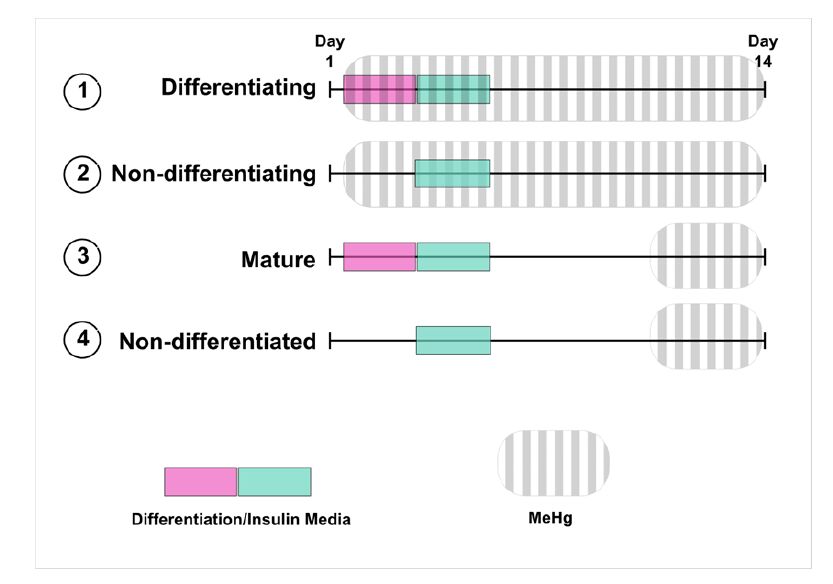
 DownLoad:
DownLoad: 